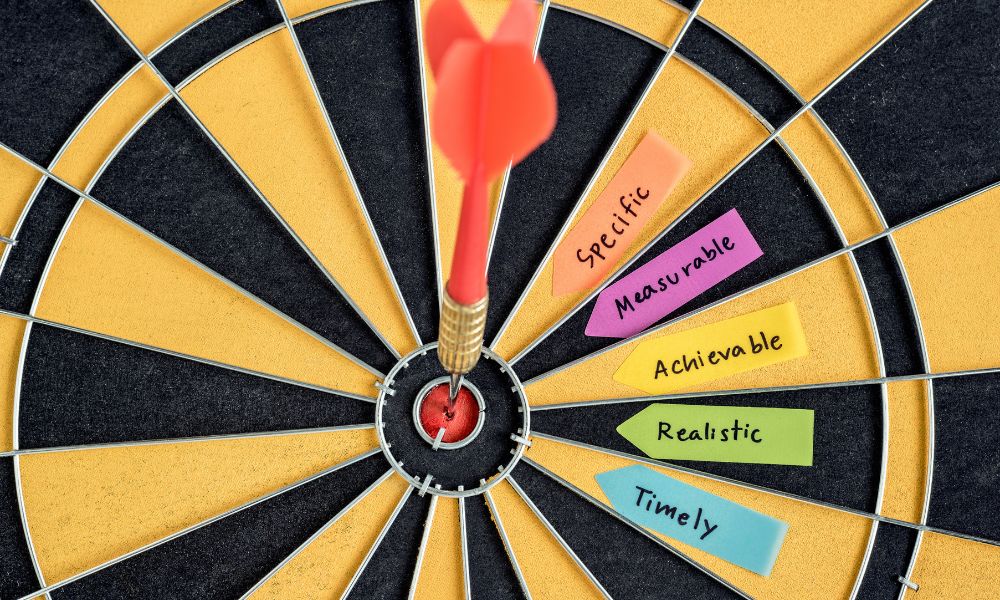
Every marketer has been there: a campaign with great reach, impressive views, and glowing engagement numbers that somehow doesn’t move the needle. That’s the paradox of modern influencer marketing: visibility is easy, but impact is hard.
The real measure of success isn’t who sees your content, but what they do after seeing it. As algorithms evolve and audiences grow more selective, brands that focus on authenticity, creator alignment, and measurable outcomes are the ones winning attention that actually converts.
We’ve seen this shift play out across hundreds of campaigns, from nano-influencers driving higher ROI than celebrity partnerships to long-term collaborations outperforming short bursts of hype. Success today comes from structure, transparency, and relationships that go beyond a single post.
Influencer marketing isn’t about chasing numbers anymore. It’s about building trust that lasts, and tracking results that prove it.
The Success Paradox: Why More Impressions Don’t Equal More Sales
A million views look impressive until you realize none of them turned into customers. That’s the trap many brands fall into when measuring influencer marketing success by surface-level metrics like reach or impressions.
The truth is, visibility doesn’t guarantee influence. A post that racks up views can still fail to drive awareness, engagement, or intent if it doesn’t connect with the right audience. Algorithms reward exposure, but exposure doesn’t always mean impact.
We’ve seen campaigns where smaller creators with tightly aligned audiences generate more conversions than large accounts with inflated follower counts. The difference lies in relevance, who the content reaches, not how many people see it.
That’s why the era of “more is better” is over. The new definition of success favors meaningful engagement, authentic connection, and measurable results over viral moments that fade as quickly as they appear.
Defining Influencer Marketing Success in 2025
Success in influencer marketing used to mean visibility: high reach, viral engagement, and a flood of likes. But as audiences and algorithms evolved, those metrics stopped telling the full story. In 2025, brands are measuring something deeper: the ability of influencer partnerships to inspire trust and drive measurable outcomes.
The shift toward performance-based influencer marketing has redefined what winning looks like. Instead of counting impressions, brands now track ROI, conversions, customer retention, and long-term audience growth. Engagement is still important, but it’s no longer the finish line, it’s the starting point for understanding impact.
Modern influencer marketing success rests on four pillars:
- Authenticity – creators who genuinely align with the brand’s values and audience.
- Relevance – campaigns that speak to specific communities, not mass audiences.
- ROI – measurable outcomes tied to business objectives, not vanity metrics.
- Retention – building ongoing brand affinity that lasts beyond a single post.
Short-term influencer activations may spark attention, but long-term partnerships build credibility. The most successful brands today focus on consistency, turning creators into ambassadors, and campaigns into relationships that compound over time.

4 Phases of the Strategic Journey to Influencer Marketing Success
Behind every successful influencer campaign, there’s structure. The brands that consistently win don’t rely on luck or viral moments, they build repeatable systems that connect strategy, creativity, and data.
Influencer marketing success follows a clear path: plan with precision, collaborate with purpose, execute with clarity, and measure what truly matters.
Tip: Within Hypefy, campaign data is tracked from influencer discovery to post-campaign analysis, giving brands a unified, real-time view of what success looks like at every stage.
Phase I: The Foundation – Strategy Before Selection
Before a single post goes live, clarity is everything. The most effective campaigns start with well-defined goals and a deep understanding of who the brand is trying to reach.
Set goals with surgical precision – from “awareness” to “attribute 15% of Q3 sales”
Success starts with measurable intent. Every campaign should answer one question: what does winning look like? Whether it’s brand visibility or direct conversions, precise objectives guide creator selection, messaging, and performance tracking.
Audit your audience – know who you’re speaking to, not just who’s listening.
Understanding your audience’s values, habits, and decision triggers turns generic campaigns into personal conversations. The better the alignment between audience and influencer, the stronger the conversion potential.
Phase II: The Partnership – Collaboration Over Transaction
Once goals are clear, it’s time to choose partners who can bring them to life. This stage transforms influencers from one-time contractors into creative allies who genuinely believe in the brand.
Vetting beyond vanity – spotting authentic influence.
The strongest creators don’t just have followers; they have trust. Instead of focusing on follower counts, analyze engagement quality, comment sentiment, and audience overlap with your customer base. Real influence leaves a trace of credibility you can measure.
Craft creative briefs that guide, not dictate.
Great influencer content happens when structure meets creativity. Provide direction through clear objectives and tone, but leave room for the creator’s voice. The balance between control and freedom is what makes branded content feel real.
Phase III: The Activation – Turning Creativity Into Conversion
This is where planning becomes momentum. Activation is the bridge between creative output and measurable performance, the moment ideas meet data.
Curate the right content mix
Different platforms and formats play different roles in the funnel. Stories build trust through real-time connection, reels spark discovery, and static posts anchor brand memory. The most successful campaigns layer these formats strategically to maintain attention from awareness to action.
Measure intent, not just engagement
Track performance beyond likes and comments. Discount codes, affiliate links, and UTM tracking connect engagement to real conversions. When creative content and clean data work together, you get a transparent view of ROI that justifies every spend.
Phase IV: The Analysis – Turning Insights Into the Next Win
The campaign may be over, but success doesn’t stop at reporting, it begins with learning. The final phase turns performance data into playbooks for future growth.
Build dashboards that tell a story.
A good KPI dashboard doesn’t just collect data; it explains outcomes. Combine engagement rates, conversions, and sentiment analysis into one narrative view. Patterns will emerge, which creators outperform expectations, which messages resonate, and where optimization pays off.
Transform results into a strategy.
The best marketing teams don’t guess, they iterate. Post-campaign insights reveal what to repeat, what to adjust, and where to invest next. Each campaign becomes a data-backed foundation for the next one, compounding success over time.

Real Examples of Influencer Marketing Success
The difference between a good influencer campaign and a great one is rarely budget, it’s execution. When strategy, creator alignment, and measurement come together, even small campaigns can outperform traditional media. These real examples show what that looks like in practice.
| Brand | Strategy | Key Result |
Gymshark | Focused on long-term collaborations with fitness micro-influencers who embodied the brand’s lifestyle, not just its products. | Achieved a 200% ROI increase within a year by turning creators into community ambassadors. |
Daniel Wellington | Replaced large paid ads with a global network of niche creators posting authentic lifestyle content. | Lowered cost per acquisition by 15% compared to paid social ads while maintaining premium brand perception. |
Glossier | Built a creator community through user-generated content and peer recommendations. | Saw 70% of total sales influenced by creator-driven and community-led content. |
| Native Teams | Used Hypefy’s data-driven discovery to match influencers with target audiences in key global markets. | Increased conversion rates 3× while reducing acquisition costs through precise audience alignment. |
Each of these campaigns followed the same principles: authenticity over reach, collaboration over control, and measurable outcomes over assumptions. Whether global or niche, influencer marketing success comes down to the same foundation, data-guided partnerships built on trust and real connection.
Measuring Influencer Marketing Success: KPIs and Tools That Matter
Even the most creative campaign means little without data to prove its impact. Measuring influencer marketing success isn’t just about tracking numbers, it’s about understanding how each metric connects to business outcomes. The right KPIs reveal what’s working, what’s wasting spend, and where to scale next.
Core metrics to track:
- Engagement rate (vs. reach): Engagement rate shows how effectively content captures attention. It reflects quality, not quantity: real conversations, saves, and shares signal true connection, while inflated reach often hides passive views.
- Click-through rate (CTR) and conversion rate: CTR bridges awareness and action. It measures how many people moved from interest to intent, while conversion rate shows how many completed the journey. Together, they define whether influence translates into tangible results.
- Cost per acquisition (CPA) and return on ad spend (ROAS): These metrics put the financial lens on performance. CPA calculates how much it costs to win a customer through influencer efforts, while ROAS reveals how efficiently those investments generate revenue. Lower CPA and higher ROAS are signs of sustainable growth.
- Sentiment analysis and share of voice: Numbers don’t capture everything. Sentiment analysis tracks how audiences feel about your brand, while share of voice measures your visibility compared to competitors. Combined, they show whether your campaigns are driving not only clicks, but credibility.
Tracking tools and methods:
- UTM parameters, affiliate links, and promo codes: These tracking tools connect influencer activity to measurable outcomes. UTMs reveal traffic sources, affiliate links track conversions, and promo codes help quantify revenue impact, all in real time.
- Google Analytics and platform insights: Analytics platforms offer a macro view of campaign performance. They uncover referral patterns, session durations, and post-click behavior, helping you see beyond vanity metrics and into user intent.
- Hypefy analytics dashboards – unified reporting and AI scoring: Within Hypefy, performance data from multiple platforms is centralized and scored by AI. Engagement quality, conversion patterns, and influencer performance benchmarks appear in one place, helping brands make fast, data-backed decisions.

Key Takeaway: Success Is Built on Data and Relationships
Influencer marketing success isn’t about luck, it’s about structure. The brands that lead the field approach it like performance marketing: measurable, consistent, and focused on real outcomes. Every campaign becomes an opportunity to test, learn, and refine what works.
The strongest results happen when strategy meets data and creativity meets trust. Building long-term relationships with authentic creators not only drives conversions but also compounds audience credibility over time.
At Hypefy, we help brands reach influencer marketing success faster by combining verified creator data, AI insights, and automated performance tracking in one platform. When every metric tells a story, success becomes repeatable, scalable, and sustainable.
Related Articles to Read
If you’re building your influencer strategy or refining your campaign performance, these articles expand on the frameworks and tactics covered above:



